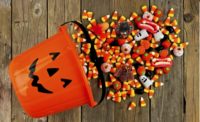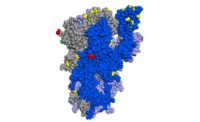With Halloween right around the corner, many Americans will soon start wondering, “How much candy will we need for trick-or-treaters?”
Shipt and Mars Wrigley have teamed up to help with a trick-or-treat cheat sheet, sharing a formula people can use to predict exactly how much candy they should buy.
As we enter the second Halloween season impacted by the ongoing COVID-19 pandemic, Mars assures consumers that its formula works for handing out treats in person or letting them fly via a fun, DIY candy chute.
"We want to be certain that no trick-or-treat bowl goes empty on Halloween night, which is why we meticulously broke down and analyzed candy shopping data to develop our very own candy formula, just in time for Halloween," said Molly Snyder, CCO, chief communications officer turned chief candy officer at Shipt, which deliver items in as soon as one hour.
To calculate how many chocolates, chewing gum, mints or fruity confections are needed for trick-or-treaters this year, consumers are encouraged to use the following formula:
(T*K*G) + (D*F*S) = Candy Pieces divided by 30 = ?? Bags of candy
T = the time, in number of hours, you plan to leave the light on
K = estimated number of kids per hour that ring the doorbell
G = the generosity factor (how many pieces will be distributed to each trick-or-treater)
D = the number of days between the initial candy purchase and Halloween
F = the number of family members in the household
S = the sneaky factor (average pieces of candy each member of the household will eat per day)
If rain is in the forecast, divide the final count by 1.5.
So for example, if you were planning to leave the light on for three hours, and you expected 20 kids per hour, and you plan to give them 3 pieces each, multiplying all of that gives your first data set. Then, if you plan to purchase the candy two days before Halloween, and you have three people in the household, and you expect everyone steal three pieces of candy per day, multiplying all of that gives you the second data set. Then you add those two together, and divide by 30 to figure out exactly how much candy you need to buy for Halloween.
Specifically, the data from that scenario would be:
(3*65*3*) + (2*3*3*) =
(180) + (18) =
198 pieces of candy =
7 of the 30-piece bags of candy (rounded up from 6.6), assuming you don’t expect to get any rain.
"With Halloween approaching quickly, Mars Wrigley is focused on continuing to demonstrate innovative ways to deliver better moments and smiles to consumers," said Tim LeBel, president of sales for Mars Wrigley U.S, also historically known as Mars Wrigley's Chief Halloween Officer. "Being able to partner with Shipt to help identify Americans' candy needs and provide delivery by the hour for some of our most sought-after treats like Snickers, Twix and M&M'S will help ensure Halloween goes off without a hitch."







